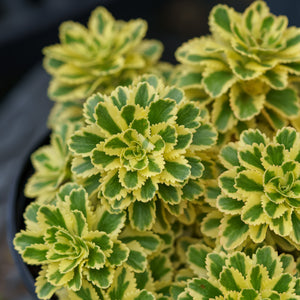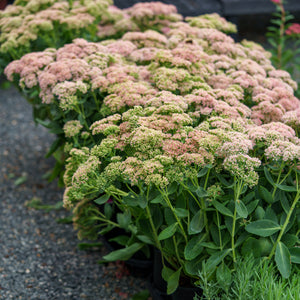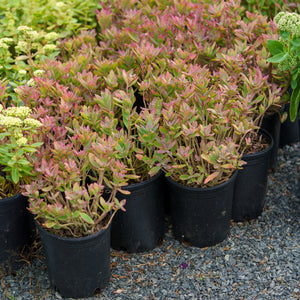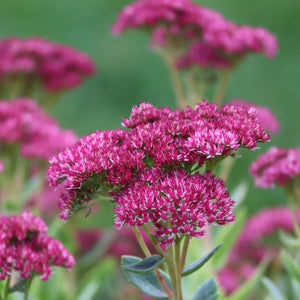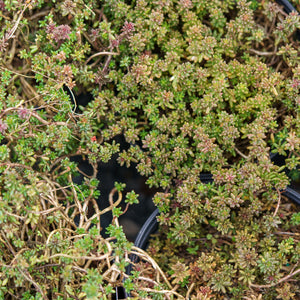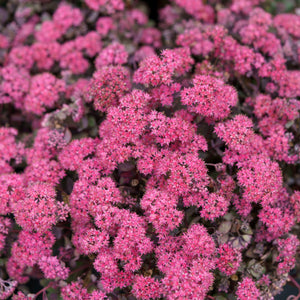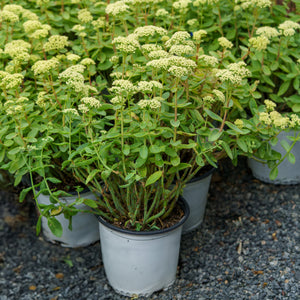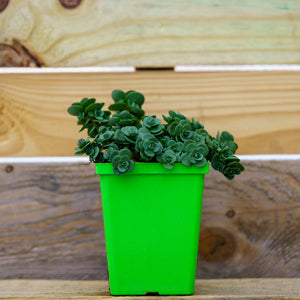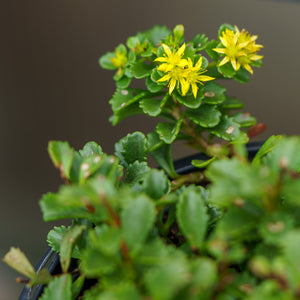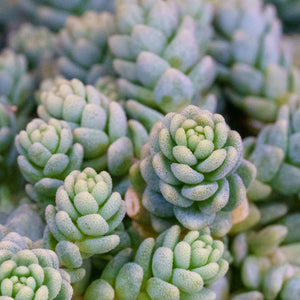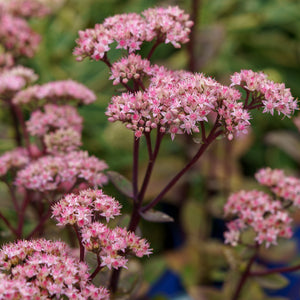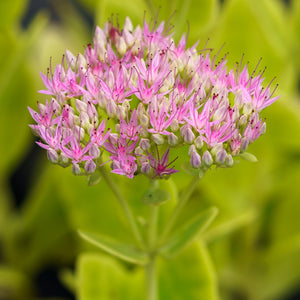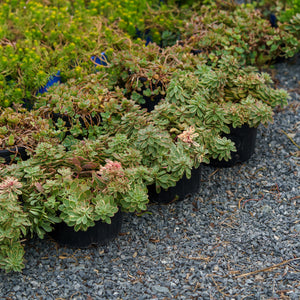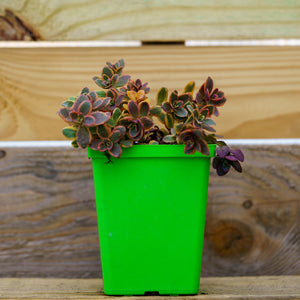The Sedum Guide
Sedum, commonly known as stonecrop, is a diverse and hardy group of succulent plants that bring vibrant color and unique texture to any garden landscape. Known for their thick, fleshy leaves and clusters of star-shaped flowers, sedums are perfect for adding interest to rock gardens, borders, and containers. Their foliage ranges from shades of green to striking reds, purples, and blues, while their blooms offer a palette of white, yellow, pink, and red. Whether you're aiming to create a drought-tolerant garden, fill in challenging spots, or add year-round interest, sedums provide a reliable and low-maintenance solution. With their ability to thrive in poor soil and harsh conditions, sedums are a hassle-free addition to any garden. Explore our Sedum Guide to learn more about cultivating and caring for these versatile succulents, and discover how to incorporate them into your garden for lasting beauty and enjoyment.
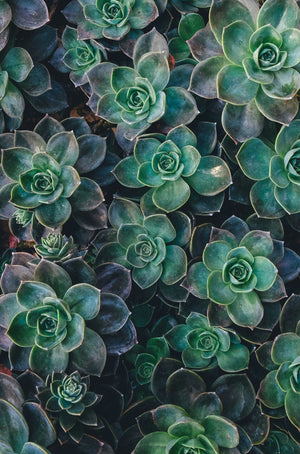
About
Sedum, commonly known as stonecrop, is a genus within the Crassulaceae family, encompassing a wide variety of succulent plants cherished for their hardy nature and ornamental appeal. Native to many parts of the world, including Europe, Asia, and North America, sedums are known for their thick, fleshy leaves that store water, making them exceptionally drought-tolerant and perfect for xeriscaping and low-maintenance gardens.
Sedums come in a diverse range of species and cultivars, each with unique characteristics. The foliage of sedums can vary widely in color, from vibrant greens and yellows to deep reds, purples, and blues. This colorful foliage is often paired with clusters of star-shaped flowers that bloom in summer to early fall, adding even more visual interest to the garden. The flowers of sedums attract pollinators like bees and butterflies, contributing to garden biodiversity.
Sedums are highly versatile and can be used in various landscape settings. They thrive in well-drained soils and can tolerate poor soil conditions, making them ideal for rock gardens, green roofs, ground covers, and container plantings. Their ability to thrive in harsh conditions, including full sun and minimal water, makes them a popular choice for gardeners looking to create sustainable and resilient garden designs.
In addition to their ornamental value, sedums are easy to propagate, either by division or from cuttings, making them an economical choice for expanding your garden. They are also relatively pest-resistant and disease-free, adding to their low-maintenance appeal.
Explore the diverse world of sedums in our comprehensive guide, where you'll find insights into planting techniques, care practices, and creative ways to incorporate these resilient plants into your garden. Whether you're enhancing rock gardens, creating colorful borders, or designing striking container displays, sedums offer endless possibilities for enriching your outdoor space.
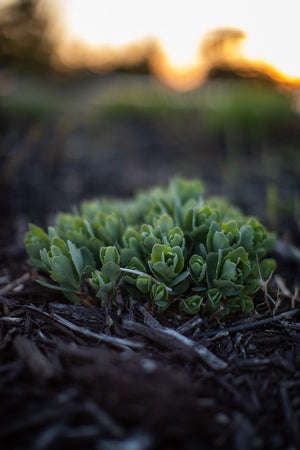
Planting
Sedum plants require specific planting conditions to ensure their successful establishment and flourishing growth. Here are some essential guidelines for planting and caring for sedums:
Soil: Sedums thrive in well-drained soil with a pH level ranging from 6.0 to 7.5. They can adapt to various soil types, including sandy, loamy, and rocky soils. Poor soil conditions are not a problem for sedums, as they are highly tolerant of low fertility. If your soil is heavy or clay-like, amend it with coarse sand or gravel to improve drainage.
Sunlight: Sedums prefer full sun to partial shade. Choose a location with at least six hours of direct sunlight per day for optimal growth and blooming. In hotter climates, some afternoon shade can help protect the plants from intense sunlight.
Watering: Adequate watering is essential during the initial growth stages. After planting, water the sedums deeply to establish strong roots. Once established, sedums are drought-tolerant and require minimal watering. Allow the soil to dry out between waterings to prevent root rot.
Mulching: Apply a thin layer of organic mulch, such as gravel or coarse sand, around the base of your sedum plants to retain moisture, suppress weed growth, and regulate soil temperature. Avoid using dense organic mulches like bark, which can retain too much moisture and lead to root rot. Ensure the mulch is kept a few inches away from the plant stems.
Spacing: Plant sedums 6 to 24 inches apart, depending on the variety and their mature size. Proper spacing ensures adequate air circulation and reduces the risk of fungal diseases.
Planting Time: The best time to plant sedums is in the spring or early fall, giving them time to establish roots before extreme weather conditions. However, sedums can be planted successfully at almost any time of the year, provided they receive adequate water and care.
Depth: When planting sedums, ensure the top of the root ball is level with the soil surface. Planting too deeply can hinder growth and lead to root rot.
By following these planting and care instructions, you can ensure the successful establishment and thriving growth of your sedum plants. With proper attention, sedums will bring vibrant color, unique texture, and resilience to your garden, enhancing its beauty and appeal for years to come.
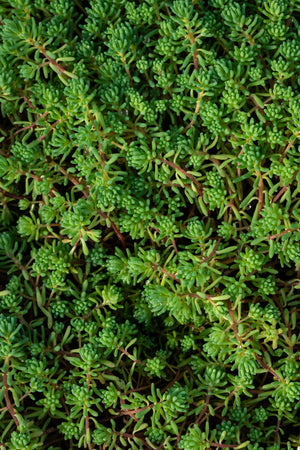
Care
Sedum plants require specific care to ensure their optimal growth and health. Here are some general guidelines for the care of sedum:
Watering: During the growing season, provide regular watering to your sedum plants, especially during dry spells. Aim to keep the soil consistently moist but not waterlogged. Water deeply at the base of the plant to encourage deep root growth. Once established, sedums are drought-tolerant and require less frequent watering. Allow the soil to dry out between waterings to prevent root rot.
Pruning: Sedums generally require minimal pruning. Remove any dead or damaged leaves as needed to maintain a tidy appearance. After the flowering period, you can trim back spent flower stalks to encourage new growth. In late fall or early spring, cut back any old foliage to make way for fresh, new growth.
Fertilizing: Sedums typically do not require heavy fertilization. Apply a balanced, slow-release fertilizer in early spring, following the recommended dosage on the product label. Avoid over-fertilizing, as this can lead to excessive foliage growth at the expense of flowers.
Soil and Sunlight: Ensure that sedums are planted in well-drained soil with a pH level ranging from 6.0 to 7.5. Sedums thrive in full sun to partial shade, with at least six hours of direct sunlight daily for optimal blooming. Amend heavy clay soils with coarse sand or gravel to improve drainage.
Mulching: Apply a thin layer of organic mulch, such as gravel or coarse sand, around the base of your sedum plants to retain moisture, suppress weed growth, and regulate soil temperature. Use materials that promote good drainage and avoid dense organic mulches that can retain too much moisture. Keep the mulch away from the plant stems.
Pests and Diseases: Sedums are generally resistant to pests and diseases, but they can occasionally encounter issues such as aphids, mealybugs, and fungal infections like powdery mildew. Inspect your plants regularly and treat any infestations promptly with appropriate organic or chemical controls.
Dividing: Sedums benefit from occasional division to maintain vigor and prevent overcrowding. Divide the plants every 3-4 years in early spring or late summer. Dig up the clump, separate it into smaller sections, and replant them at the same depth as the original plant.
Winter Care: Sedums are generally hardy and can withstand cold temperatures. In colder climates, protect your sedum plants during winter by applying a layer of mulch to insulate the roots. Remove any debris from around the plants in the fall to reduce the risk of pests and diseases overwintering in the garden.
By following these care guidelines, your sedum plants will thrive and add vibrant color, unique texture, and resilience to your garden for years to come. With their low maintenance requirements and adaptability, sedums are a valuable addition to any landscape, providing year-round interest and beauty.
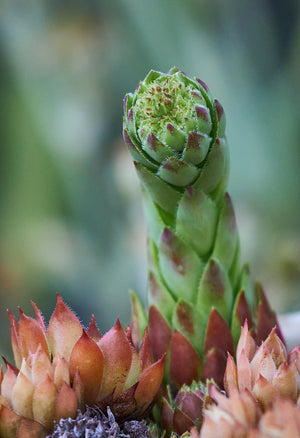
How To Use
Sedum plants offer versatility and can be utilized in various ways to enhance your landscape. Here are some recommendations based on their characteristics:
Ground Cover: Use low-growing sedum varieties as ground covers to fill in bare spots in your garden. Their dense, spreading habit makes them excellent for suppressing weeds and creating a lush, green carpet.
Rock Gardens: Sedums are ideal for rock gardens due to their drought tolerance and ability to thrive in well-drained, rocky soils. Plant them among rocks or gravel to add vibrant color and texture to your rock garden.
Borders and Edging: Use taller sedum varieties to create attractive borders along pathways, garden beds, or driveways. Their upright growth habit and colorful blooms add structure and definition to your garden.
Containers: Sedums thrive in containers, making them perfect for patios, balconies, or entryways. Plant them in pots or mixed containers to enjoy their beauty up close. Ensure the containers have good drainage to prevent waterlogging.
Green Roofs: Sedums are a popular choice for green roofs due to their shallow root systems and ability to thrive in minimal soil. They help insulate buildings, reduce stormwater runoff, and provide habitat for pollinators.
Erosion Control: Sedums’ dense root systems make them excellent for erosion control on slopes and embankments. Plant them in areas prone to erosion to stabilize the soil and prevent runoff.
Pollinator Gardens: Sedum flowers attract pollinators like bees, butterflies, and hummingbirds. Plant them alongside other pollinator-friendly plants to create a thriving ecosystem that supports local wildlife.
Drought-Tolerant Gardens: Sedums are perfect for xeriscaping and drought-tolerant gardens. Combine them with other drought-resistant plants like cacti, succulents, and ornamental grasses to create a low-water landscape.
Seasonal Displays: Use sedums in seasonal displays to create stunning visual effects. Their diverse foliage colors and textures provide interest throughout the year, making them valuable additions to any garden design.
Indoor Decor: Some smaller sedum varieties can be grown indoors as houseplants. Plant them in decorative pots and place them in bright, sunny locations to enjoy their unique beauty indoors.
When incorporating sedums into your landscape, consider their growth habits, sunlight requirements, and soil preferences. By choosing the right placement and utilizing their versatile nature, sedum plants can enhance the beauty and functionality of your outdoor space, providing year-round interest and vibrant foliage.
Conclusion
Sedum plants are a versatile and resilient addition to any garden landscape. With their vibrant foliage, unique texture, and colorful blooms, sedums bring year-round interest and charm to your outdoor space. Their ability to thrive in poor soil conditions, withstand drought, and require minimal maintenance makes them a favorite among gardeners of all levels. By following proper planting and care techniques, you can fully harness the potential of sedums to enhance your garden and create a lasting impact.
Whether you seek to create lush ground covers, striking rock gardens, or attractive borders, sedums can fulfill a variety of roles in your landscape design. Plant them individually to showcase their unique beauty, or cluster them together for a dramatic visual display. Sedums' adaptability also makes them ideal for containers, green roofs, and erosion control projects.
Beyond their ornamental value, sedums contribute to the overall health and biodiversity of your garden ecosystem by attracting pollinators and providing habitat for beneficial insects. Their low maintenance requirements and ecological benefits make them an excellent choice for sustainable gardening. With their enduring beauty, versatility, and resilience, sedum plants bring natural allure and functionality to your outdoor environment, enriching your gardening experience and enhancing the overall beauty of your landscape.


